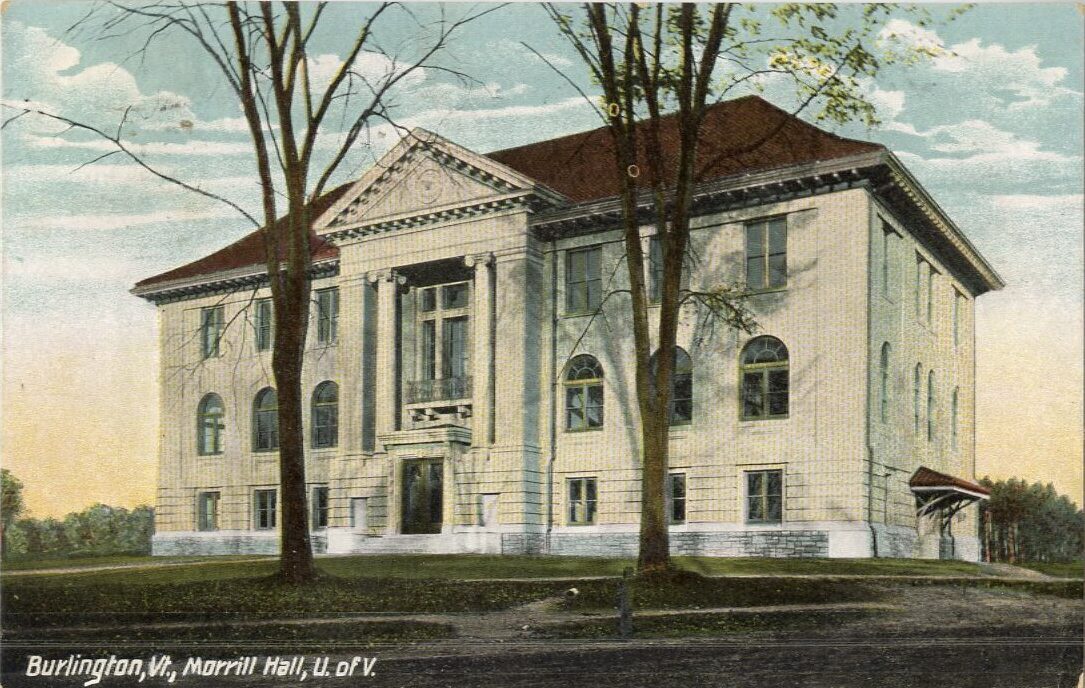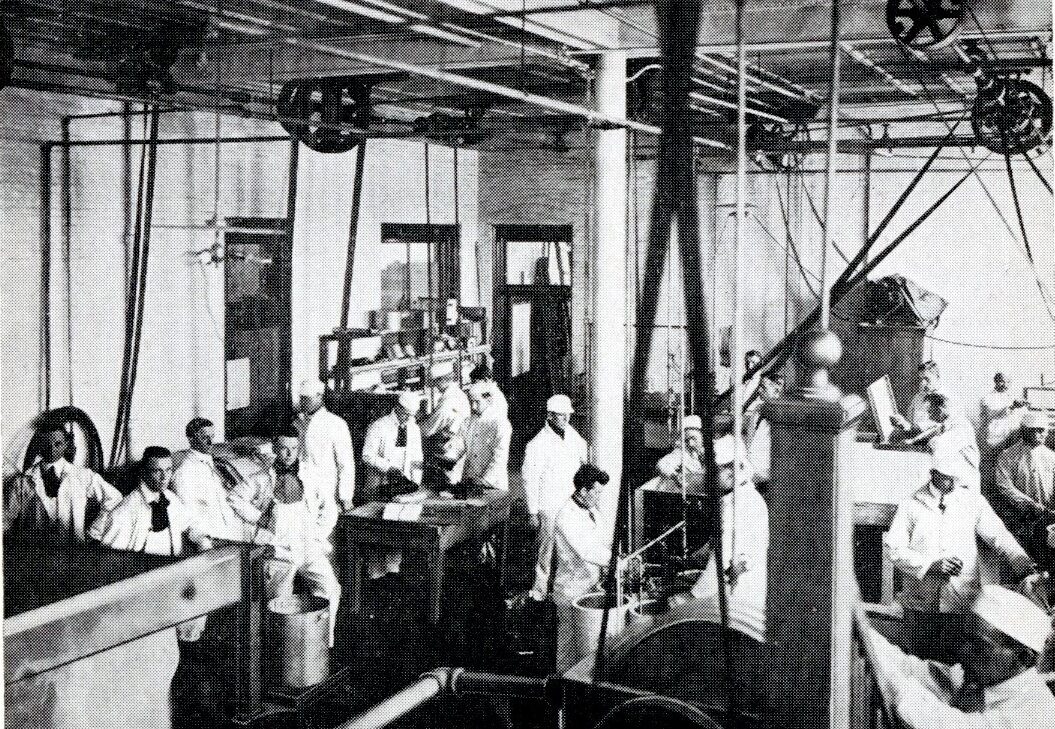For National Dairy Month, Silver Special Collections student assistant Michael Maloney (UVM 2022) writes about the UVM Dairy School, which began in 1891. His research was prompted by two early twentieth-century photos of Dairy School students that were recently donated to Special Collections.
The University of Vermont held an annual Dairy School program each winter starting in 1891. The Dairy School was typically four to six weeks in length and initially taught lessons on the practical manner of the manufacture of butter using the most modern apparatus for the job. By the fifth year of the program, it included lectures on the constitution and production of milk, creaming and churning, handling, and testing of milk products. The Dairy School was suspended during the winters of 1904 to 1907 while UVM constructed a new Agricultural Department building. Morrill Hall, completed in 1907, was fully furnished with modern equipment for Dairy School classes. After the Dairy School was reinstated in the winter of 1908, it continued with only minor changes to the program over the years until the late 1930s, when it ended due to a lack of demand.
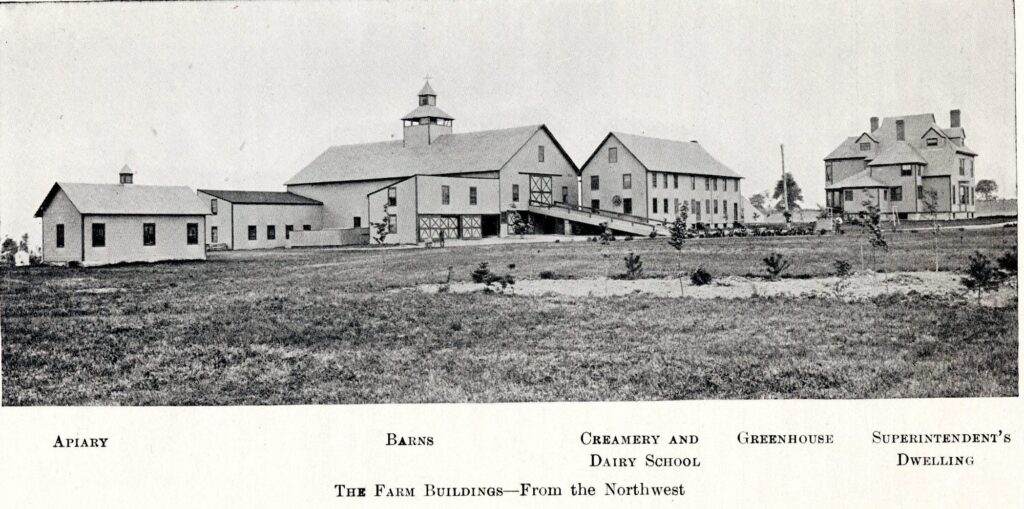
This 1901 photograph of UVM’s farm buildings includes the original creamery and dairy school (third from right). Source: Vermont Agricultural College Bulletin.
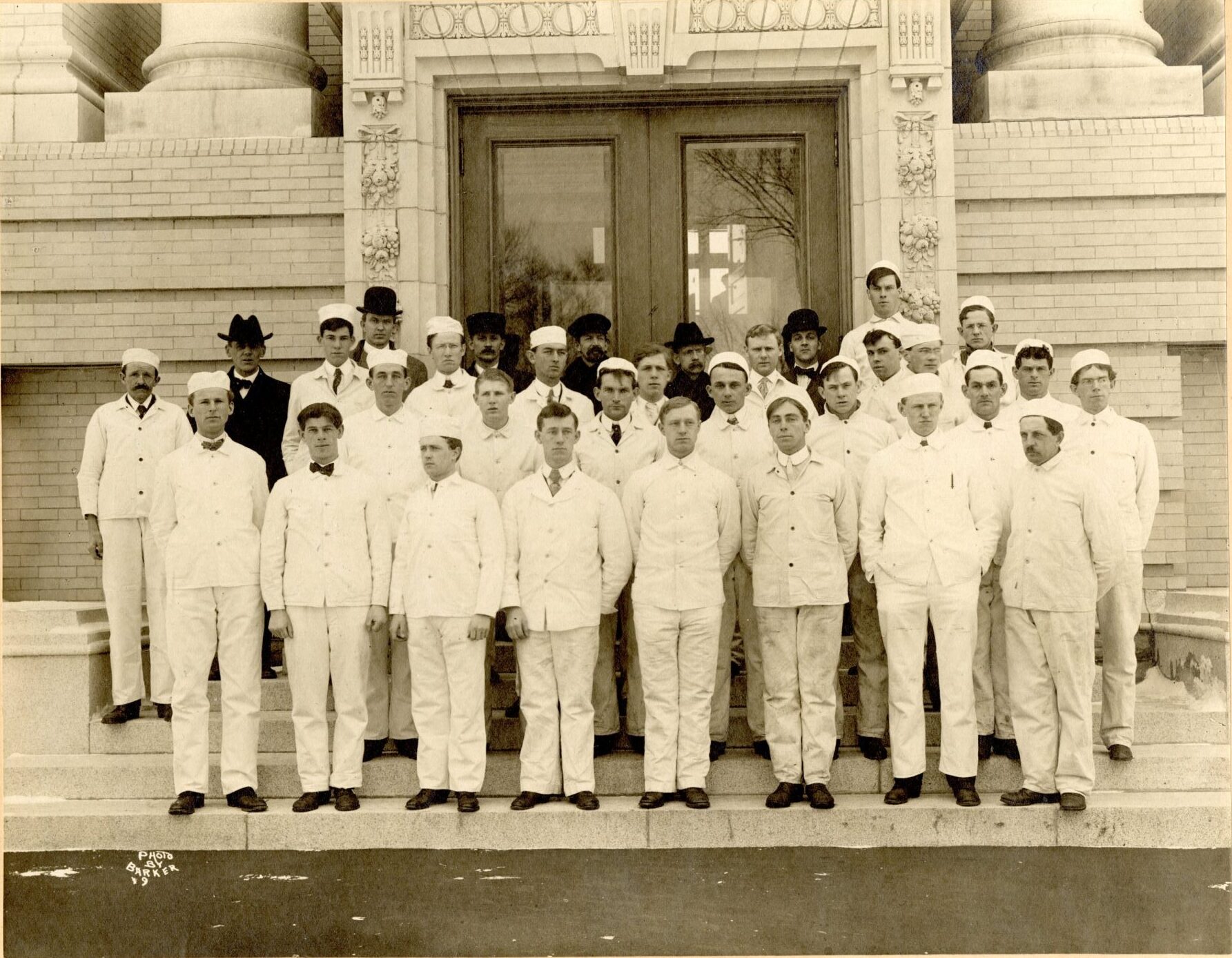
Class of dairymen in their official uniforms in front of Morrill Hall. Photo by B. Benton Barker, circa 1907-1913.
The Dairy School maintained throughout its operation that its purpose was to teach practical application and technical instruction, and the focus of the school was about business and not academic learning. The program was designed to meet a demand for an intense short and practical training lesson in the handling of milk and manufacture of milk products. Its goal was to teach how to manage a dairy enterprise of any sort and it was intended for those interested in butter-making at a creamery or at home, in the market milk industry as producer or handler, and for those who could not take one of the longer courses at UVM.
The 1907/08 UVM course catalogue describes the equipment provided at Morrill Hall for the Dairy School: “The creamery equipment consists of several power separators, milk heater, Farrington pasteurizer, starter can, cream ripener, combined churn and workers, and multiple butter printer. The farm dairy room contains several hand separators, churns, workers, printers, etc. The milk testing lab has hand and power Babcock testers, an apparatus for determining total solids, acidity, taints, and the moisture content of butter. The market milk room has a pasteurizer, milk cooler, bottle filler, bottle washer and sterilizer. All machinery runs on two five-horsepower electric motors. A hot water boiler and fifteen-horsepower boiler furnish hot water and steam for the cleansing and pasteurizing.”
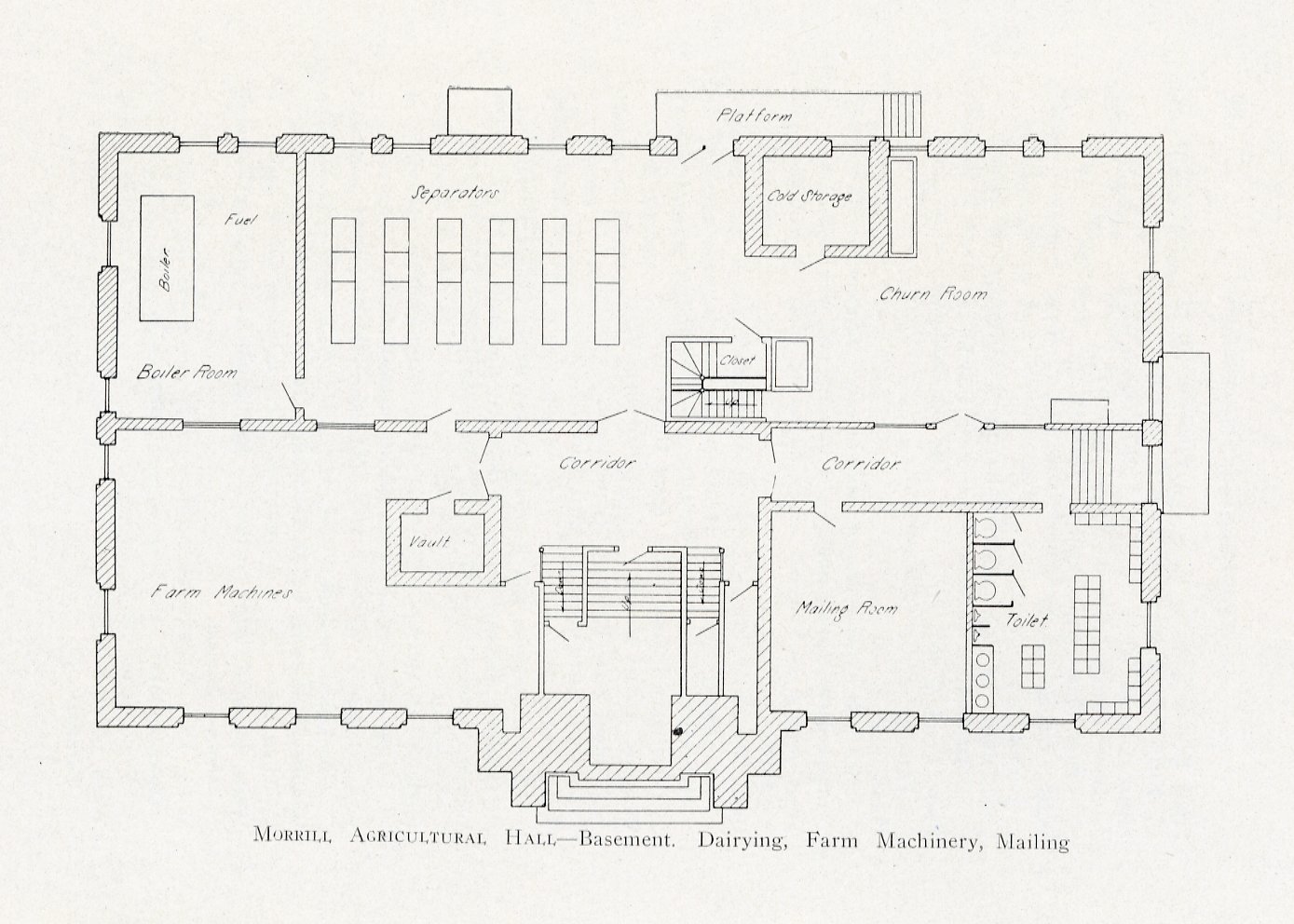
Morrill Hall basement floor plan. Farm machines, boiler room, separators, churn room, and cold storage all for making butter. Source: 1906 Vermont Agricultural College Bulletin.
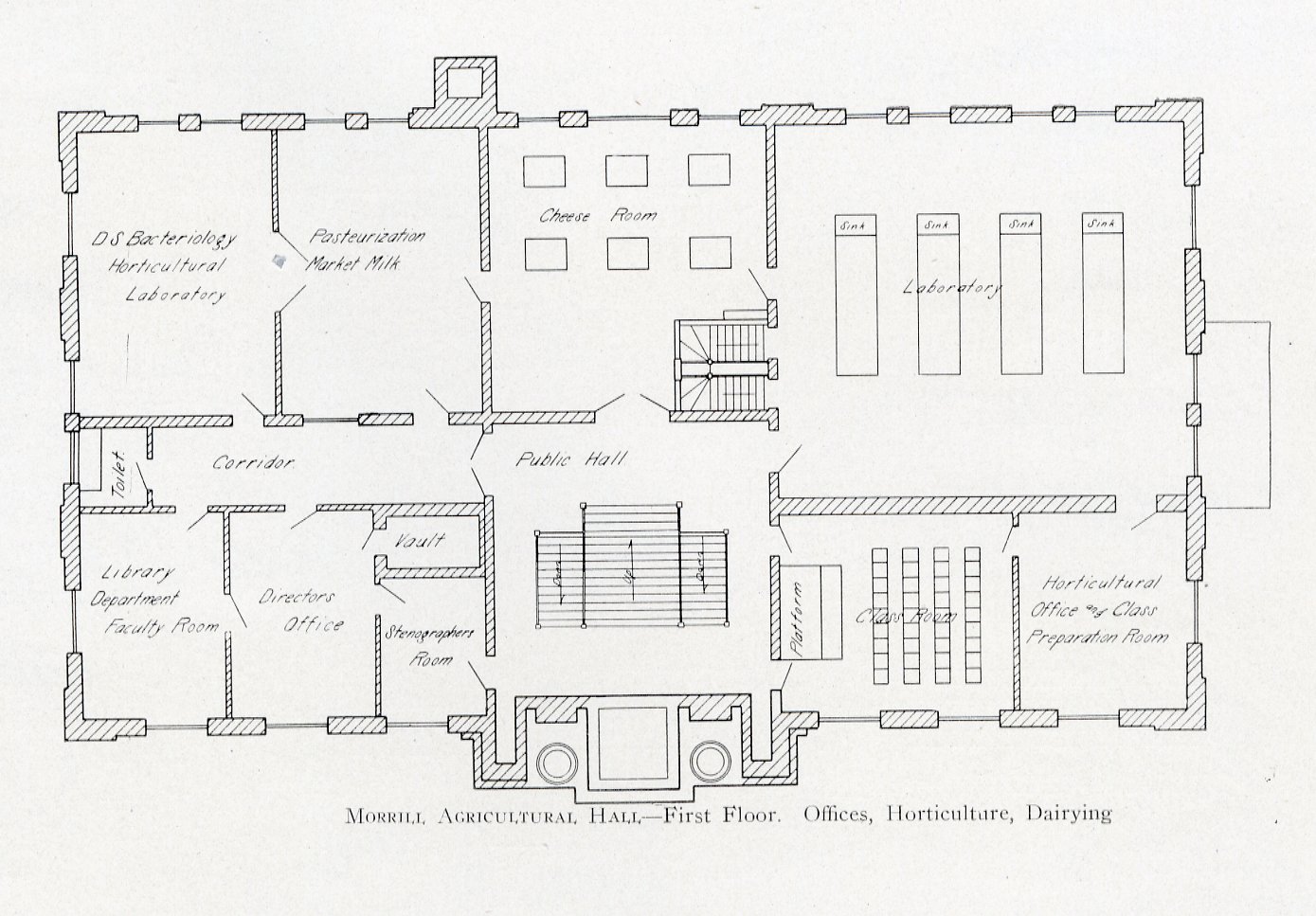
Morrill Hall first floor plan. Pasteurization room, cheese room, and laboratory used by Dairy School students. Source: 1906 Vermont Agricultural College Bulletin.
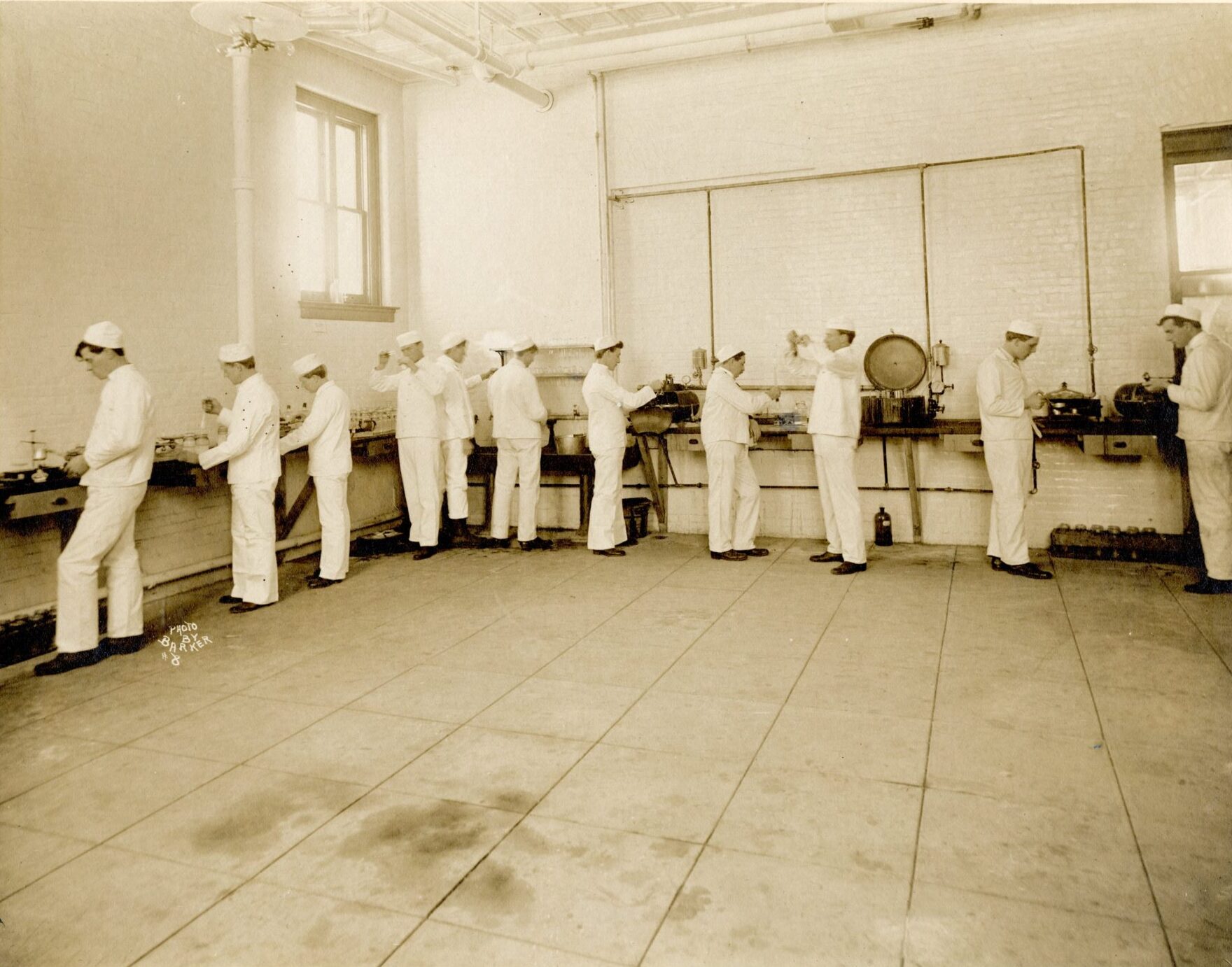
Dairy men working in basement of Morrill Hall with modern butter making equipment. Photo by B. Benton Barker, circa 1907-1913.
In its later years, the Dairy School expanded to include a variety of winter courses focused more on general agriculture and home economics, and it eventually became part of UVM’s “Winter Short Courses in Agriculture.” Women were encouraged to come to the Dairy School as early as 1901/2. However, when the home economics program was introduced, they were strongly encouraged to take those courses instead. Course bulletins and newspaper articles still mentioned that women were welcome to take the dairy courses, but there was a clear emphasis encouraging women to participate in the home economics programs. The images below provide a general sense of the courses offered and a dairy school attendee’s day-to-day schedule. Students often went on excursions outside Burlington to visit technical plants, farms and Dairymen Association meetings.
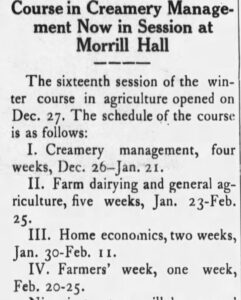
List of winter courses at UVM including creamery management and dairying courses. Source: Vermont Cynic, Jan. 5, 1911.
Many of the dairymen, as they were called, found themselves in very successful careers after completing the program at UVM. For example, Oscar H. Perrin attended UVM Dairy school in 1896 and had a successful forty-year career in Charlestown, Massachusetts working as a dairyman for H. P. Hood. Another example is Mr. Gilmore, a graduate of the Dairy School who helped operate Ingleside Dairies in St. Albans, Vermont.
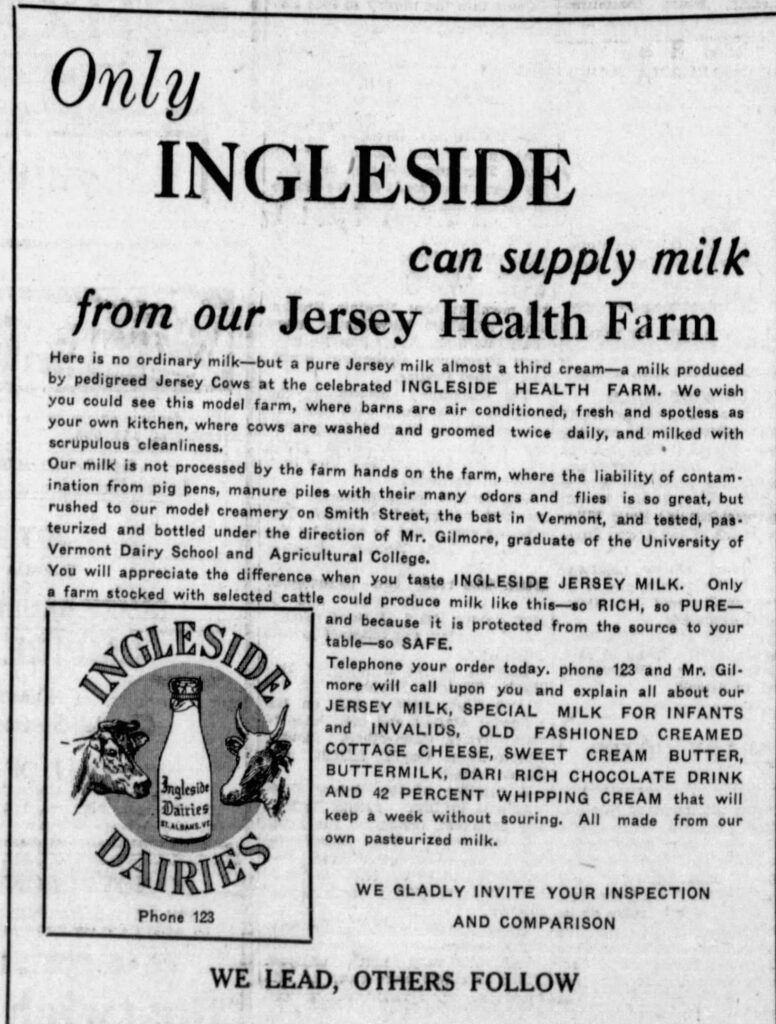
Ingleside Dairies advertises that “our milk…is rushed to our model creamery…and tested, pasteurized ad bottle under the direction of Mr. Gilmore, graduate of the University of Vermont Dairy School.” St. Albans Daily Messenger, May 14, 1938.
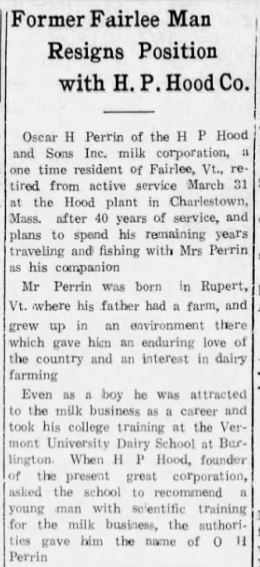
With the “scientific training for the milk business” that he received at the UVM Dairy School, Oscar H. Perrin worked for the H. P. Hood dairy corporation for 40 years. United Opinion, April 3, 1936.
The UVM Dairy School and its history highlight the significance of the dairy industry in Vermont. As the state moved from traditional agriculture to more scientific and mechanized practices, UVM created programs that would help Vermont farmers succeed and thrive in the changing landscape. The dairy school helped teach dairymen how to use new technology, improve their business practices, and make new connections that helped grow the dairy farming industry during the first part of the twentieth century.

